094. Hadada Ibis Bostrychia hagedash (Hadeda)
Order: Pelecaniformes. Family: Threskiornithidae
Description
Length 76 cm. Stocky, dark brown ibis, identified by heavy, brown body, wings glossy greenish or purple with fairly short blackish legs, decurved large black bill with red stripe on upper mandible and iridescent pink shoulder plus white cheek-stripe. Its eyes are brown. In flight, the feet don’t project beyond the tail. Male and female look alike.
Distribution
Africa south of the Sahara. Found in most parts of South Africa, except the Karoo and North-western Cape.
Habitat
Feed on damp ground, near water or in vleis, plamtations, agricultural land, suburban gardens and playing fields.
Diet
Earthworms, using its long scimitar-like bill to probe soft soil. It also eats larger insects, spiders and small lizards.
Breeding
Monogamous, solitary nester. Males display before choosing a mate. The pair then engages in mutual bowing and display preening. The male usually gathers nest materials, which it ritually offers to its mate. The nest is built by the female, consisting of a platform of sticks with a central bowl lined with grass, lichen, weeds, leaves and other debris. It is typically placed in the fork of a horizontal branch. Egg-laying season is from June-March, peaking from September-November. It lays 1-5 green eggs, which are incubated by both sexes for about 25-28 days. The chicks are fed by both parents by regurgitation and brooded constantly for the first week of their life, less frequently thereafter. The chick leaves the nest at about 33-40 days old, becoming fully independent at roughly 60 days old.
Call
It has a distinctively loud and recognisable haa-haa-haa-de-dah call that is often heard when the birds are flying or are startled, hence the name. Listen to Bird Call
Status
Widespread and common throughout its large range and is evaluated as Least Concern on the IUCN Red List of Threatened Species.
Africa Wild Bird Book
Hadada Ibis Photos
094. Hadada Ibis Bostrychia hagedash
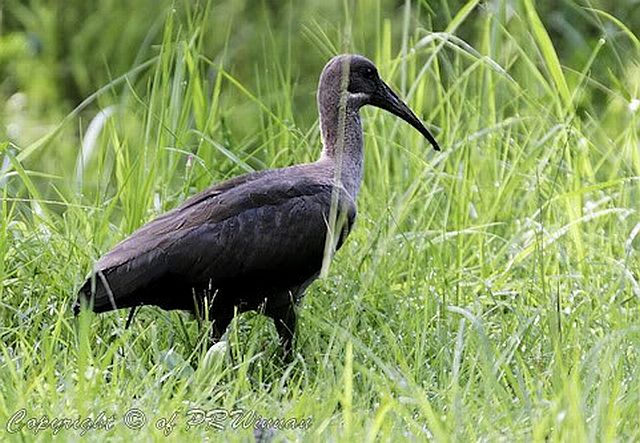
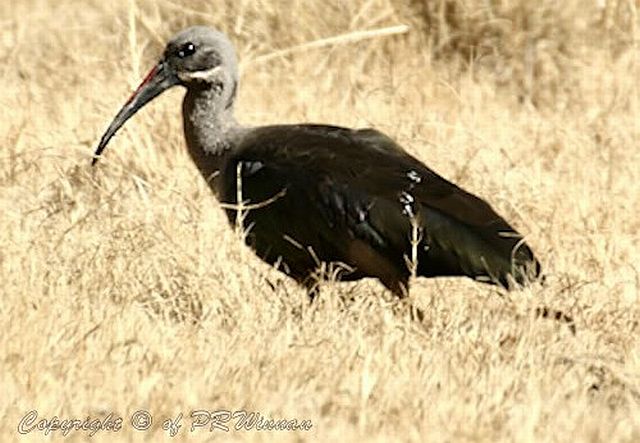
 © leachy
© leachy
 © Duke
© Duke
uMkhuze, kuMasinga Hide, KwaZulu-Natal
Links:
Species text Sabap1
Sabap2


 © leachy
© leachy © Duke
© DukeuMkhuze, kuMasinga Hide, KwaZulu-Natal
Links:
Species text Sabap1
Sabap2
Glossy Ibis
093. Glossy Ibis Plegadis falcinellus (Glansibis)
Order: Pelecaniformes. Family: Threskiornithidae
Description
Length 55-65 cm, wingspan 88-105 cm, weight 5-7.68 kg. Males are larger than females. More slender and lighter-bodied than the other ibises. Bill brownish, long, thin, and evenly decurved; legs reddish-brown to olive-grey.
Breeding adult: Body reddish-brown and bronze-brown with iridescent green wingswings glossy bottle-green. There is a narrow white to cobalt blue line around the base of the bill.
Non-breeding adult duller.
Juvenile: Head and neck sooty brown; duller, and lacks chestnut and purple gloss.
Distribution
This bird is found almost world-wide. In South Africa common in Mpumalanga, Gauteng, Limpopo and KZN, Also found in northern Botswana, northern Namibia, Caprivi and Zimbabwe.
Habitat
Grassland, farmlands, vleis, pans, sewage works and lake shores.
Diet
Food includes invertebrates, fish, frogs and small reptiles.
Breeding
Monogamous, breeding in colonies of roughly 3-200 nests, often alongside other birds. The nest is mainly built by the female with material provided by the female, consisting of a small platform of sedge stems, reeds, sticks and branches, lined with grass, leaves and other soft material. It is typically placed in a dense patch of rushes or reeds, occasionally on the ground on a large reedbed island. Egg-laying season is from September-February in South Africa and from November-April further north in southern Africa. It lays 2-4 eggs, which are incubated by both sexes by both sexes for about 20-23 days. The chicks are brooded by both parents for the first two weeks, after which they form crèches in nearby reedbeds, although they still return to the nest to be fed. They can fly and self feed after they reach 42 days old, becoming fully independent roughly a week later.
Call
Generally silent; gives harsh graa-graa notes. Listen to Bird Call.
Status
Generally uncommon resident, with both sedentary and nomadic populations. Gregarious.
Order: Pelecaniformes. Family: Threskiornithidae
Description
Length 55-65 cm, wingspan 88-105 cm, weight 5-7.68 kg. Males are larger than females. More slender and lighter-bodied than the other ibises. Bill brownish, long, thin, and evenly decurved; legs reddish-brown to olive-grey.
Breeding adult: Body reddish-brown and bronze-brown with iridescent green wingswings glossy bottle-green. There is a narrow white to cobalt blue line around the base of the bill.
Non-breeding adult duller.
Juvenile: Head and neck sooty brown; duller, and lacks chestnut and purple gloss.
Distribution
This bird is found almost world-wide. In South Africa common in Mpumalanga, Gauteng, Limpopo and KZN, Also found in northern Botswana, northern Namibia, Caprivi and Zimbabwe.
Habitat
Grassland, farmlands, vleis, pans, sewage works and lake shores.
Diet
Food includes invertebrates, fish, frogs and small reptiles.
Breeding
Monogamous, breeding in colonies of roughly 3-200 nests, often alongside other birds. The nest is mainly built by the female with material provided by the female, consisting of a small platform of sedge stems, reeds, sticks and branches, lined with grass, leaves and other soft material. It is typically placed in a dense patch of rushes or reeds, occasionally on the ground on a large reedbed island. Egg-laying season is from September-February in South Africa and from November-April further north in southern Africa. It lays 2-4 eggs, which are incubated by both sexes by both sexes for about 20-23 days. The chicks are brooded by both parents for the first two weeks, after which they form crèches in nearby reedbeds, although they still return to the nest to be fed. They can fly and self feed after they reach 42 days old, becoming fully independent roughly a week later.
Call
Generally silent; gives harsh graa-graa notes. Listen to Bird Call.
Status
Generally uncommon resident, with both sedentary and nomadic populations. Gregarious.
- Sprocky
- Posts: 7110
- Joined: Sat May 19, 2012 12:29 pm
- Country: South Africa
- Location: Grietjie Private Reserve
- Contact:
African Spoonbill
095. African Spoonbill Platalea alba (Lepelaar)
ORDER PELECANIFORMES. Family: Threskiornithidae.
Description
Length 75-90 cm, weight 1.45-1.89 kg. Long, flattened, spoon-shaped bill, blue-grey above, with a red edge. Facial skin is red grading to yellow on the chin and throat. Eyes are pale blue, Red legs and feet. White plumage.
Sexes alike, male larger with longer and slightly more decurved bill.
The juvenile has blackish streaks on crown, its bill is yellowish to horn-coloured.
Distribution
A narrow horizontal band from Senegal to Ethiopia, extending south through Uganda, Kenya, eastern DRC, Tanzania, Zambia and Angola to South Africa.
Habitat
Shallow aquatic margins.
Movements and migrations
Nomadic, as it moves in response to rainfall and habitat availability.
Diet
Small fish and aquatic invertebrates. It feeds by wading through the water with side-to-side sweeping motion of the bill, snapping prey up instinctively when its bill makes contact. Its oddly-shaped bill is adapted for this technique, as the spoon shape makes it easier it to grab slippery prey. It also follows Nile crocodiles and Hippopotamuses, catching animals they disturb.
Breeding
Mainly monogamous, nesting in colonies of 5-20, occasionally up to 150-200 pairs. The platform nest is built solely by the female with material brought by the male, consisting of a flat oval structure of sticks, creepers, reeds and twigs, sometimes lined with grass. It is usually in tree near water, but may be on the ground among rocks, or on a cliff. Egg-laying season is mainly from July-November in southern Africa, although in Botswana and Namibia it is from February-August. The clutch consists of three to five spotted red, brown or blue eggs which is incubated by both parents for 21-29 days. The young fledge after 20-30 days.
Call
Usually silent; gives guttural croaks and grunts.
Status
Locally common resident, gregarious and nomadic in response to water levels.
ORDER PELECANIFORMES. Family: Threskiornithidae.
Description
Length 75-90 cm, weight 1.45-1.89 kg. Long, flattened, spoon-shaped bill, blue-grey above, with a red edge. Facial skin is red grading to yellow on the chin and throat. Eyes are pale blue, Red legs and feet. White plumage.
Sexes alike, male larger with longer and slightly more decurved bill.
The juvenile has blackish streaks on crown, its bill is yellowish to horn-coloured.
Distribution
A narrow horizontal band from Senegal to Ethiopia, extending south through Uganda, Kenya, eastern DRC, Tanzania, Zambia and Angola to South Africa.
Habitat
Shallow aquatic margins.
Movements and migrations
Nomadic, as it moves in response to rainfall and habitat availability.
Diet
Small fish and aquatic invertebrates. It feeds by wading through the water with side-to-side sweeping motion of the bill, snapping prey up instinctively when its bill makes contact. Its oddly-shaped bill is adapted for this technique, as the spoon shape makes it easier it to grab slippery prey. It also follows Nile crocodiles and Hippopotamuses, catching animals they disturb.
Breeding
Mainly monogamous, nesting in colonies of 5-20, occasionally up to 150-200 pairs. The platform nest is built solely by the female with material brought by the male, consisting of a flat oval structure of sticks, creepers, reeds and twigs, sometimes lined with grass. It is usually in tree near water, but may be on the ground among rocks, or on a cliff. Egg-laying season is mainly from July-November in southern Africa, although in Botswana and Namibia it is from February-August. The clutch consists of three to five spotted red, brown or blue eggs which is incubated by both parents for 21-29 days. The young fledge after 20-30 days.
Call
Usually silent; gives guttural croaks and grunts.
Status
Locally common resident, gregarious and nomadic in response to water levels.
- Sprocky
- Posts: 7110
- Joined: Sat May 19, 2012 12:29 pm
- Country: South Africa
- Location: Grietjie Private Reserve
- Contact:
African Spoonbill Photos
095. African Spoonbill Platalea alba
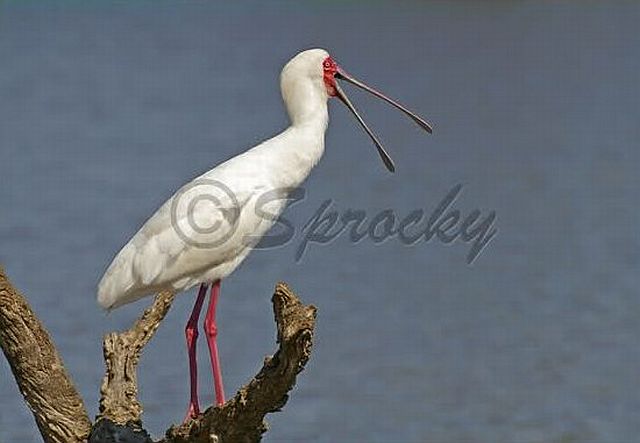
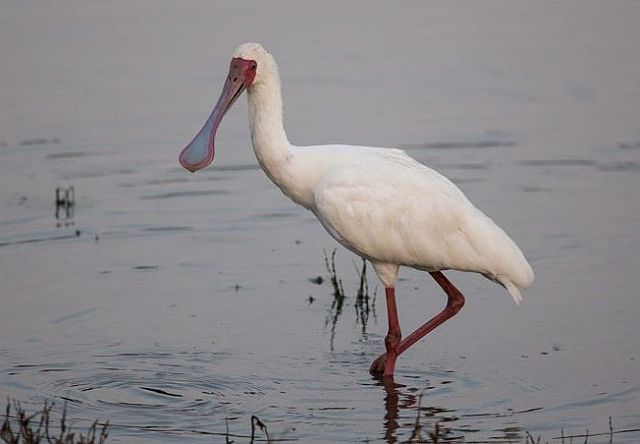 © Pumbaa
© Pumbaa
Kruger National Park
 © PRWIN
© PRWIN
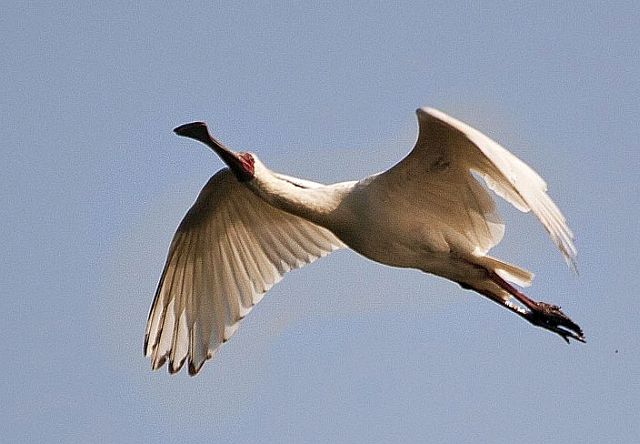 © PRWIN
© PRWIN
 © Flutterby
© Flutterby
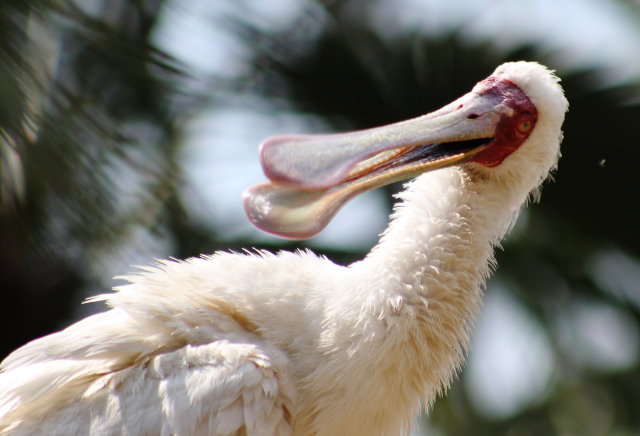 © Flutterby
© Flutterby
 © Flutterby
© Flutterby
Links:
Species text Sabap1
Sabap2

 © Pumbaa
© PumbaaKruger National Park
 © PRWIN
© PRWIN © PRWIN
© PRWIN © Flutterby
© Flutterby © Flutterby
© Flutterby © Flutterby
© FlutterbyLinks:
Species text Sabap1
Sabap2
Family Ardeidae (Herons, Bitterns)
The herons are long-legged freshwater and coastal birds in the family Ardeidae, with 64 recognised species (some are called "egrets" or "bitterns" instead of "heron"). Within Ardeidae, all members of the genera Botaurus and Ixobrychus are referred to as "bitterns", and are a monophyletic group within the Ardeidae. However, egrets are not a biologically distinct group from the herons, and tend to be named differently because they are mainly white or have decorative plumes. Although egrets have the same build as herons, they tend to be smaller.
The classification of the individual heron/egret species is fraught with difficulty, and there is still no clear consensus about the correct placement of many species into either of the two major genera, Ardea and Egretta.
Although herons resemble birds in some other families, such as the storks, ibises, spoonbills and cranes, they differ from these in flying with their necks retracted, not outstretched. They are also one of the bird groups that have powder down. Some members of this group nest colonially in trees, while others, notably the bitterns, use reedbeds.
The herons are medium to large sized birds with long legs and necks. They exhibit very little sexual dimorphism in size. The smallest species is usually considered the Little Bittern, which can measure under 30 cm in length, although all the species in the Ixobrychus genus are small and many broadly overlap in size. The largest species of heron is the Goliath Heron, which stand up to 152 cm tall. The necks are able to kink in an s-shape, due to the modified shape of the sixth vertebrae. The neck is able to retract and extend, and is retracted during flight, unlike most other long-necked birds. The neck is longer in the day herons than the night herons and bitterns. The legs are long and strong and in almost every species are unfeathered from the lower part of the tibia. In flight the legs and feet are held backward. The feet of herons have long thin toes, with three forward pointing ones and one going backward.
The bill is generally long and harpoon like. It can vary from extremely fine to thick as in the Grey Heron. The bill, as well as other bare parts of the body, is usually yellow, black or brown coloured, although this colour can vary during the breeding season. The wings are broad and long, exhibiting 10–11 primaries feathers, 15–20 secondaries and 12 rectrices (10 in the bitterns). The feathers of the herons are soft and the plumage is usually blue, black, brown, grey or white, and can often be strikingly complex. Amongst the day herons there is little sexual dimorphism in plumage (except in the pond-herons); differences between the sexes are the rule for the night herons and smaller bitterns.
Almost all species are associated with water, they are essentially non-swimming waterbirds that feed on the margins of lakes, rivers, swamps, ponds and the sea. They are predominately found in lowland areas, although some species live in alpine areas, and the majority of species occur in the tropics.
The herons and bitterns are carnivorous. The members of this family are mostly associated with wetlands and water, and feed on a variety of live aquatic prey. The diet includes a wide variety of aquatic animals, including fish, reptiles, amphibians, crustaceans, molluscs and aquatic insects.
The most common hunting technique is for the bird to sit motionless on the edge of or standing in shallow water and wait until prey comes within range. Birds may either do this from an upright posture, giving them a wider field of view for seeing prey, or from a crouched position, which is more cryptic and means the bill is closer to the prey when it is located. Having seen prey the head is moved from side to side, so that the heron can calculate the position of the prey in the water and compensate for refraction, and then the bill is used to spear the prey.
In addition to sitting and waiting, herons may feed more actively. They may walk slowly, at around or less than 60 paces a minute, snatching prey when it is observed. Other active feeding behaviours include foot stirring and probing, where the feet are used to flush out hidden prey. The wings may be used to frighten prey (or possibly attract it to shade) or to reduce glare; the most extreme example of this is exhibited by the Black Heron, which forms a full canopy with its wings over its body.
Some species of heron, such as the Little Egret and Grey Heron, have been documented using bait in order to lure prey to within striking distance. Herons may use items already in place, or actively add items to the water in order to attract fish.
The classification of the individual heron/egret species is fraught with difficulty, and there is still no clear consensus about the correct placement of many species into either of the two major genera, Ardea and Egretta.
Although herons resemble birds in some other families, such as the storks, ibises, spoonbills and cranes, they differ from these in flying with their necks retracted, not outstretched. They are also one of the bird groups that have powder down. Some members of this group nest colonially in trees, while others, notably the bitterns, use reedbeds.
The herons are medium to large sized birds with long legs and necks. They exhibit very little sexual dimorphism in size. The smallest species is usually considered the Little Bittern, which can measure under 30 cm in length, although all the species in the Ixobrychus genus are small and many broadly overlap in size. The largest species of heron is the Goliath Heron, which stand up to 152 cm tall. The necks are able to kink in an s-shape, due to the modified shape of the sixth vertebrae. The neck is able to retract and extend, and is retracted during flight, unlike most other long-necked birds. The neck is longer in the day herons than the night herons and bitterns. The legs are long and strong and in almost every species are unfeathered from the lower part of the tibia. In flight the legs and feet are held backward. The feet of herons have long thin toes, with three forward pointing ones and one going backward.
The bill is generally long and harpoon like. It can vary from extremely fine to thick as in the Grey Heron. The bill, as well as other bare parts of the body, is usually yellow, black or brown coloured, although this colour can vary during the breeding season. The wings are broad and long, exhibiting 10–11 primaries feathers, 15–20 secondaries and 12 rectrices (10 in the bitterns). The feathers of the herons are soft and the plumage is usually blue, black, brown, grey or white, and can often be strikingly complex. Amongst the day herons there is little sexual dimorphism in plumage (except in the pond-herons); differences between the sexes are the rule for the night herons and smaller bitterns.
Almost all species are associated with water, they are essentially non-swimming waterbirds that feed on the margins of lakes, rivers, swamps, ponds and the sea. They are predominately found in lowland areas, although some species live in alpine areas, and the majority of species occur in the tropics.
The herons and bitterns are carnivorous. The members of this family are mostly associated with wetlands and water, and feed on a variety of live aquatic prey. The diet includes a wide variety of aquatic animals, including fish, reptiles, amphibians, crustaceans, molluscs and aquatic insects.
The most common hunting technique is for the bird to sit motionless on the edge of or standing in shallow water and wait until prey comes within range. Birds may either do this from an upright posture, giving them a wider field of view for seeing prey, or from a crouched position, which is more cryptic and means the bill is closer to the prey when it is located. Having seen prey the head is moved from side to side, so that the heron can calculate the position of the prey in the water and compensate for refraction, and then the bill is used to spear the prey.
In addition to sitting and waiting, herons may feed more actively. They may walk slowly, at around or less than 60 paces a minute, snatching prey when it is observed. Other active feeding behaviours include foot stirring and probing, where the feet are used to flush out hidden prey. The wings may be used to frighten prey (or possibly attract it to shade) or to reduce glare; the most extreme example of this is exhibited by the Black Heron, which forms a full canopy with its wings over its body.
Some species of heron, such as the Little Egret and Grey Heron, have been documented using bait in order to lure prey to within striking distance. Herons may use items already in place, or actively add items to the water in order to attract fish.
Family Ardeidae (Herons, Bitterns) Index
Species indigenous to southern Africa:
Family Ardeidae (Herons, Bitterns)
Botaurus stellaris Eurasian Bittern, Great Bittern 080
Ixobrychus minutus Little Bittern 078
Ixobrychus sturmii Dwarf Bittern 079
Gorsachius leuconotus White-backed Night Heron 077
Nycticorax nycticorax Black-crowned Night Heron 076
Butorides striata Green-backed Heron, Striated Heron 074
Ardeola ralloides Squacco Heron 072
Ardeola idae Malagasy Pond Heron 073
Ardeola rufiventris Rufous-bellied Heron 075
Bubulcus ibis Western Cattle Egret, Cattle Egret 071
Ardea cinerea Grey Heron 062
Ardea melanocephala Black-headed Heron 063
Ardea goliath Goliath Heron 064
Ardea purpurea Purple Heron 065
Ardea alba Great Egret 066
Ardea intermedia Intermediate Egret, Yellow-billed Egret 068
Egretta ardesiaca Black Egret, Black Heron 069
Egretta vinaceigula Slaty Egret 070
Egretta caerulea Little Blue Heron
Egretta thula Snowy Egret
Egretta garzetta Little Egret 067
Egretta gularis Western Reef-Heron
Family Ardeidae (Herons, Bitterns)
Botaurus stellaris Eurasian Bittern, Great Bittern 080
Ixobrychus minutus Little Bittern 078
Ixobrychus sturmii Dwarf Bittern 079
Gorsachius leuconotus White-backed Night Heron 077
Nycticorax nycticorax Black-crowned Night Heron 076
Butorides striata Green-backed Heron, Striated Heron 074
Ardeola ralloides Squacco Heron 072
Ardeola idae Malagasy Pond Heron 073
Ardeola rufiventris Rufous-bellied Heron 075
Bubulcus ibis Western Cattle Egret, Cattle Egret 071
Ardea cinerea Grey Heron 062
Ardea melanocephala Black-headed Heron 063
Ardea goliath Goliath Heron 064
Ardea purpurea Purple Heron 065
Ardea alba Great Egret 066
Ardea intermedia Intermediate Egret, Yellow-billed Egret 068
Egretta ardesiaca Black Egret, Black Heron 069
Egretta vinaceigula Slaty Egret 070
Egretta caerulea Little Blue Heron
Egretta thula Snowy Egret
Egretta garzetta Little Egret 067
Egretta gularis Western Reef-Heron
- nan
- Posts: 26443
- Joined: Thu May 31, 2012 9:41 pm
- Country: Switzerland
- Location: Central Europe
- Contact:
Eurasian Bittern, Great Bittern
080. Eurasian Bittern (Great Bittern) Botaurus stellaris (Grootrietreier)
Order: Pelecaniformes. Family: Ardeidae
Description
Size 64 cm. The largest bittern, this species is more often heard than seen. The plumage is rich golden brown strongly marked with black streaking, speckling and barring. The upperparts are streaked buff-brown and black, with a black crown and broad, conspicuous, dark moustachial stripes runninf down the pale cream throat. The underparts are buff, heavily streaked with dark brown. The black moustachial stripes and tawny (not grey) overall colour should prevent confusion with juvenile Black-crowned Night-Heron.
Distribution
This species breeds in Europe, Asia and Africa. It is found from the UK and southern Scandinavia to Siberia, Japan, Spain, Turkey and north-western and sub-Saharan Africa. In southern Africa, it is rare in northern Botswana and the Caprivi Strip (Namibia), with a few isolated populations in South Africa and eastern Zimbabwe.
Besides the Eurasian race, Botaurus s. stellaris, another race, Botaurus s. capensis exists in southern Africa, which occurs sparingly in marshes of the east coast, the Okavango Delta and the upland foothills of the Drakensberg. The southern race suffered catastrophic decline during the 20th century due to wetland degradation, and unlike the northern race it is of highest conservation concern. In South Africa only regularly recordet at Nylsvlei and more recently, Ntsikeni Vlei Nature Reserve. The estimated population in South Africa is between 100 – 150 pairs.
Habitat
Reedbeds, sedge beds and flooded grassland. It generally favours tall, dense emergent vegetation in large, seasonal or permanent wetlands. It also occupies Papyrus (Cyperus papyrus) swamps, flooded grassland and rice fields.
Diet
It mainly eats fish, frogs and aquatic invertebrates, doing most of its foraging by standing still or wading through shallow water, within the effective cover of reeds and marsh plants.
Breeding
Its breeding habits have barely been studied in southern Africa, so much of the following information comes from other parts of the world.
Monogamous or polygynous solitary nester, as one male may have up to about five mates. It is highly territorial - males fight aerially in an attempt to stab each other, sometimes resulting in death. The nest is a shallow, saucer-shaped platform of sedges, reed stems, grass and rushes, typically placed in dense vegetation close to to the water surface. Egg-laying season is from September-March. It lays 2-4 eggs, which are incubated solely by the female for about 25-28 days. The chicks are fed by the female with food provided by the male, learning to fly at roughly 50-55 days old.
Call
Deep, resonant three to five-syllable booming, reminiscent of the grunting of a distant lion.
Listen to Bird Call.
Status
Rare, movements poorly understood. Critically endangered in South Africa, as it has an extremely small population in the country, largely due to the draining of wetlands, disruption of stream flow and other types of human disturbance. It was previously common across much of southern Africa, excluding the most arid areas, but it now has an estimated population of just 233-344 birds in the region.
Order: Pelecaniformes. Family: Ardeidae
Description
Size 64 cm. The largest bittern, this species is more often heard than seen. The plumage is rich golden brown strongly marked with black streaking, speckling and barring. The upperparts are streaked buff-brown and black, with a black crown and broad, conspicuous, dark moustachial stripes runninf down the pale cream throat. The underparts are buff, heavily streaked with dark brown. The black moustachial stripes and tawny (not grey) overall colour should prevent confusion with juvenile Black-crowned Night-Heron.
Distribution
This species breeds in Europe, Asia and Africa. It is found from the UK and southern Scandinavia to Siberia, Japan, Spain, Turkey and north-western and sub-Saharan Africa. In southern Africa, it is rare in northern Botswana and the Caprivi Strip (Namibia), with a few isolated populations in South Africa and eastern Zimbabwe.
Besides the Eurasian race, Botaurus s. stellaris, another race, Botaurus s. capensis exists in southern Africa, which occurs sparingly in marshes of the east coast, the Okavango Delta and the upland foothills of the Drakensberg. The southern race suffered catastrophic decline during the 20th century due to wetland degradation, and unlike the northern race it is of highest conservation concern. In South Africa only regularly recordet at Nylsvlei and more recently, Ntsikeni Vlei Nature Reserve. The estimated population in South Africa is between 100 – 150 pairs.
Habitat
Reedbeds, sedge beds and flooded grassland. It generally favours tall, dense emergent vegetation in large, seasonal or permanent wetlands. It also occupies Papyrus (Cyperus papyrus) swamps, flooded grassland and rice fields.
Diet
It mainly eats fish, frogs and aquatic invertebrates, doing most of its foraging by standing still or wading through shallow water, within the effective cover of reeds and marsh plants.
Breeding
Its breeding habits have barely been studied in southern Africa, so much of the following information comes from other parts of the world.
Monogamous or polygynous solitary nester, as one male may have up to about five mates. It is highly territorial - males fight aerially in an attempt to stab each other, sometimes resulting in death. The nest is a shallow, saucer-shaped platform of sedges, reed stems, grass and rushes, typically placed in dense vegetation close to to the water surface. Egg-laying season is from September-March. It lays 2-4 eggs, which are incubated solely by the female for about 25-28 days. The chicks are fed by the female with food provided by the male, learning to fly at roughly 50-55 days old.
Call
Deep, resonant three to five-syllable booming, reminiscent of the grunting of a distant lion.
Listen to Bird Call.
Status
Rare, movements poorly understood. Critically endangered in South Africa, as it has an extremely small population in the country, largely due to the draining of wetlands, disruption of stream flow and other types of human disturbance. It was previously common across much of southern Africa, excluding the most arid areas, but it now has an estimated population of just 233-344 birds in the region.
- nan
- Posts: 26443
- Joined: Thu May 31, 2012 9:41 pm
- Country: Switzerland
- Location: Central Europe
- Contact:
Eurasian Bittern Photos
080. Eurasian Bittern (Great Bittern) Botaurus stellaris
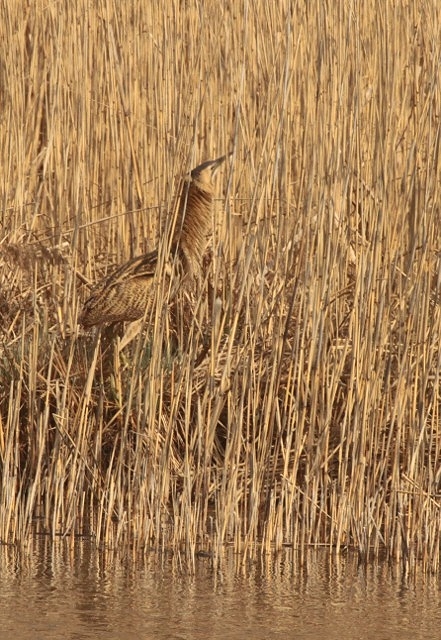
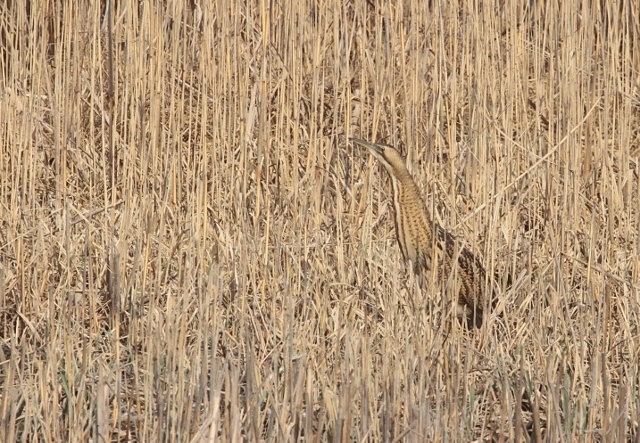

Switzerland
 © Toko
© Toko
Links:
Species text in The Atlas of Southern African Birds
Sabap2
Heron Conservation
Oiseaux net: http://www.oiseaux-birds.com/card-eurasian-bittern.html



Switzerland
 © Toko
© TokoLinks:
Species text in The Atlas of Southern African Birds
Sabap2
Heron Conservation
Oiseaux net: http://www.oiseaux-birds.com/card-eurasian-bittern.html



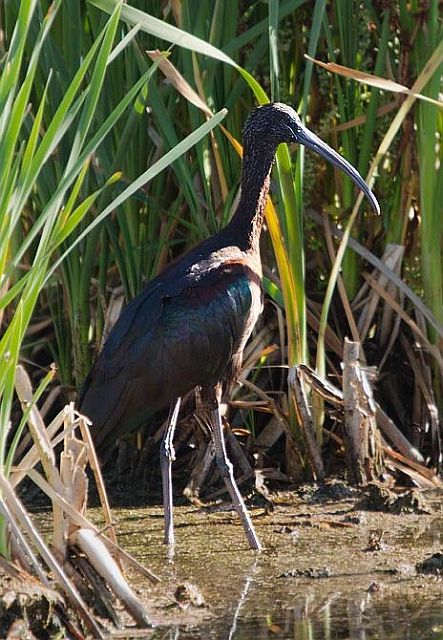
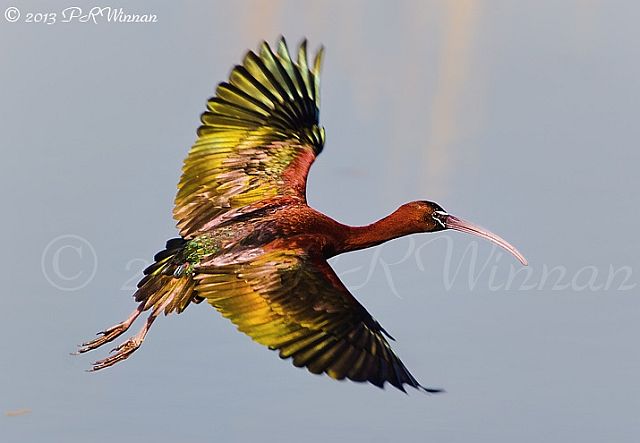
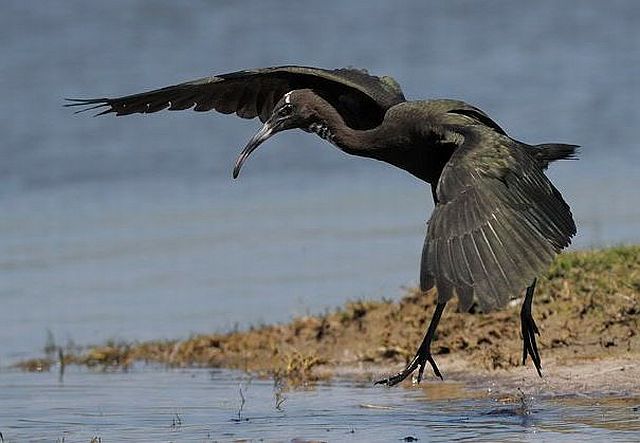 © Dewi
© Dewi